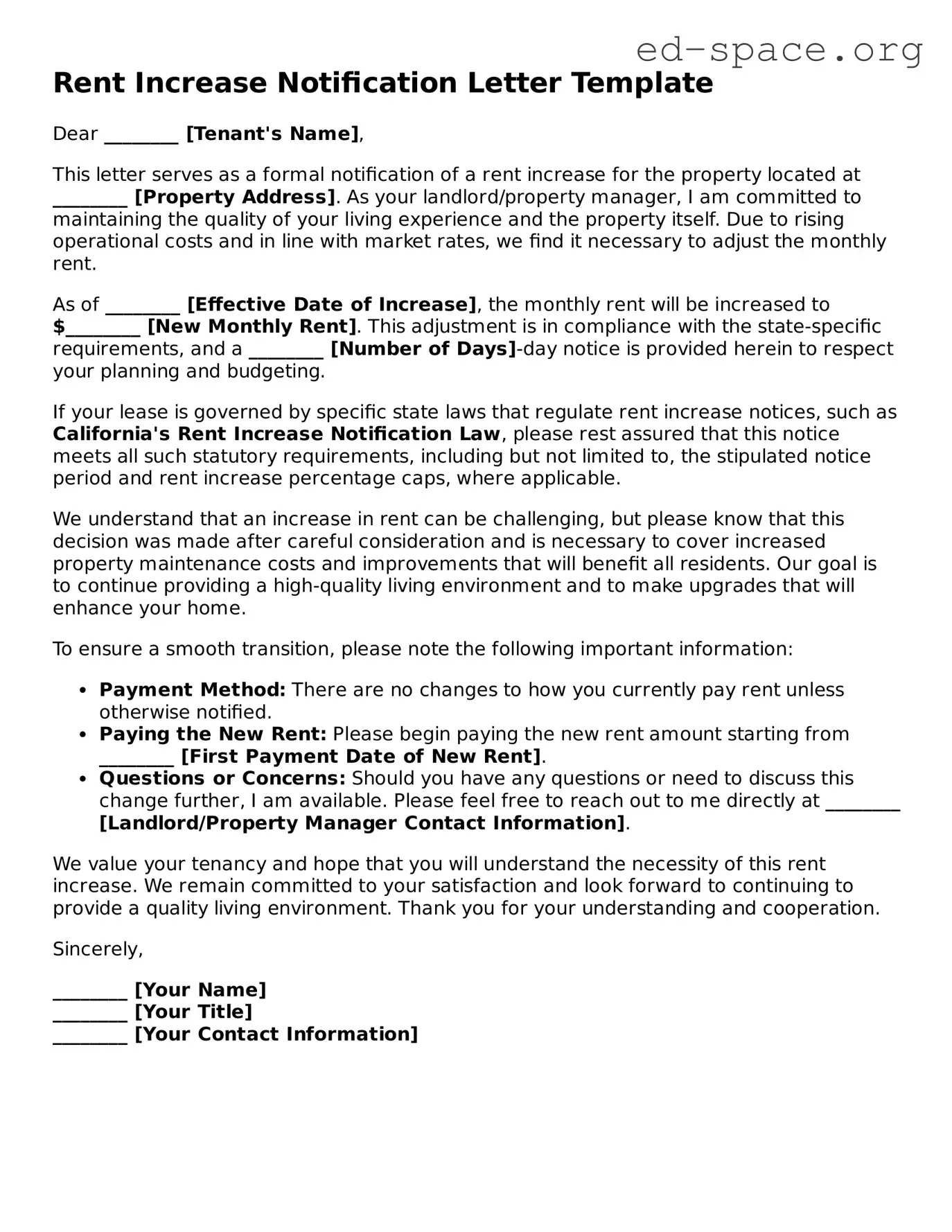Rent Increase Notification Letter Template
Dear ________ [Tenant's Name],
This letter serves as a formal notification of a rent increase for the property located at ________ [Property Address]. As your landlord/property manager, I am committed to maintaining the quality of your living experience and the property itself. Due to rising operational costs and in line with market rates, we find it necessary to adjust the monthly rent.
As of ________ [Effective Date of Increase], the monthly rent will be increased to $________ [New Monthly Rent]. This adjustment is in compliance with the state-specific requirements, and a ________ [Number of Days]-day notice is provided herein to respect your planning and budgeting.
If your lease is governed by specific state laws that regulate rent increase notices, such as California's Rent Increase Notification Law, please rest assured that this notice meets all such statutory requirements, including but not limited to, the stipulated notice period and rent increase percentage caps, where applicable.
We understand that an increase in rent can be challenging, but please know that this decision was made after careful consideration and is necessary to cover increased property maintenance costs and improvements that will benefit all residents. Our goal is to continue providing a high-quality living environment and to make upgrades that will enhance your home.
To ensure a smooth transition, please note the following important information:
- Payment Method: There are no changes to how you currently pay rent unless otherwise notified.
- Paying the New Rent: Please begin paying the new rent amount starting from ________ [First Payment Date of New Rent].
- Questions or Concerns: Should you have any questions or need to discuss this change further, I am available. Please feel free to reach out to me directly at ________ [Landlord/Property Manager Contact Information].
We value your tenancy and hope that you will understand the necessity of this rent increase. We remain committed to your satisfaction and look forward to continuing to provide a quality living environment. Thank you for your understanding and cooperation.
Sincerely,
________ [Your Name]
________ [Your Title]
________ [Your Contact Information]
